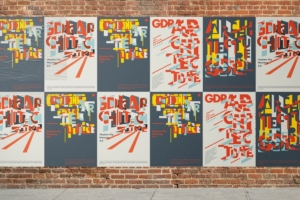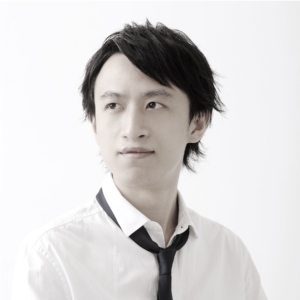This website uses cookies so that we can provide you with the best user experience possible. Cookie information is stored in your browser and performs functions such as recognising you when you return to our website and helping our team to understand which sections of the website you find most interesting and useful.
Interview with QiuYu Li, LICC Winner in ILLUSTRATE (Graphic) in the Non-Professional category, discusses, among other things, how he wants to incorporate more Asian culture into his work.
Tell us a little about your background. How did your love of art grow?
I was born in Beijing, China in 1992, and as a small child, I developed good observational skills because I am a little more sensitive than those around me. In addition, my parents have a democratic educational policy, so they supported my education in painting, music, and other art-related subjects to the best of their ability. After graduating from high school to study abroad in Japan, I began to receive a full-fledged education in design, and I continue to create designs on a daily basis. The reason why I fell in love with art should be based on my personality. I prefer to be alone and think about things in the world quietly, rather than playing with others.
What merits do you see in being Winner in Illustrate (graphic)? What does receiving this award personally mean to you?
I am very proud to have received the award. Speaking of benefits, first of all, winning an award is a morale booster and an acknowledgment of one’s own work and abilities. Also, winning an award is a good chance to promote your work.
What steps do you take in the creative process, and what tools do you use?
The tool I often use is Adobe Illustrator. Regarding the production process, the first step is to decide on the content of the work first, and then collect relevant materials and literature on that content. For example, this work was developed against the backdrop of East Germany, and if I did not have some understanding of that historical background, it would be difficult to develop the work. I once designed a Cyrillic letter before. It took me three months to learn Russian for the project.
Where do you find your inspiration and motivation for your work?

Best in ILLUSTRATE (Graphic) Non-Professional: “Utopian City Ver2” by QiuYu Li
Inspiration can come from many places. From everyday life, from history, and from music. I have been in the habit of thinking since I was a child, so with just a hint, I finally start to dig deep into it, and ideas gradually come to me as I think.
I think that if you live a serious life and pay attention to your surroundings and the world around you, you will surely find a lot of inspiration.
What design endeavor would you most like to pursue?
I have been looking for an international style of design, but there are still few design works that incorporate Chinese and East Asian points and cultures. So in the future, I plan to pay more attention to traditional Asian cultures and develop my work.
What impact do you believe your own culture and environment have had on your creative vision both personally and professionally?
I am of the generation born in the 90’s in China, and a characteristic of China in that era was its willingness to actively participate in the international community. Therefore, I have grown up being influenced by international culture since I was a child. This influence is still present in their works today, as they seek international and stateless works. Also, by studying in Japan, he has experienced at least some discrimination due to his nationality. This led him to realize the importance of transmitting the culture of a more international global. Since design has a role to transmit culture, designers should have a sense of mission to transmit objective global culture in order to create a better world.
Tell us about a project that you feel has been your most successful achievement.
I think the “Utopian City” series poster is the most successful project of all. I think it is significant to record the culture of that era from an objective point of view through the method of typography. Politically, for better or worse, it is part of human civilization and history. It should not be forgotten or ignored. Only after we remember our history, reflect on the lessons of the past, and the world can be better off. The “Utopian City” series posters send this message. It also points in the right direction for new developments in constructivist typography in terms of visual expression.
Which photographers and designers in your industry do you most admire, and why?
In the history of design, El Lissitzky is my most respected and favorite designer. Lissitzky was a designer active in the early 20th century, and his philosophy of design is very avant-garde, and I consider it to be of great reference value even today. Lissitzky has greatly influenced my design philosophy and design principles.
How do you think design has changed over time, and how do you envision it changing moving forward?
The recent development of ChatGPT, AI technology, is both impressive and critical: with the development of AI technology, will AI be able to automatically create everything in the near future, especially general design work that is based on rationality? This is what designers have to worry about. Certainly, rational, functional, and excellent designs may be possible with AI technology. But the humanistic aspect of design, or humanness, is what makes us uniquely human. So I believe that future designers should focus on the human emotional aspect of design rather than the functional aspect, and design with more of a humanistic spirit.
What do you believe to be the current significant possibilities and problems in your field?
In the case of Japan, one problem is the excessive pursuit of trendy culture. Designers, especially of the younger generation, ignore aspects of design culture and simply mass produce what is trendy, cool, or cute. As a result, the underlying cultural and humanistic aspects are left empty. This could be remedied in the future by emphasizing the history of design development and education.
What are you working on right now, if you could give us a sneak peek?
In fact, the 72 Seasons series poster that was selected for the short list is an experimental stage of design production. Its final product is a visual book. As is my habit, I would rather do some experimental work first and decide on the overall direction of the project before starting the actual production, rather than producing a visual book out of the blue. Currently, that production is still in the process of being coordinated, it is a very large scale production and will take some time to complete.
View the winning project of QiuYu Li here.
© 2024 London International Creative Competition




Recent Comments